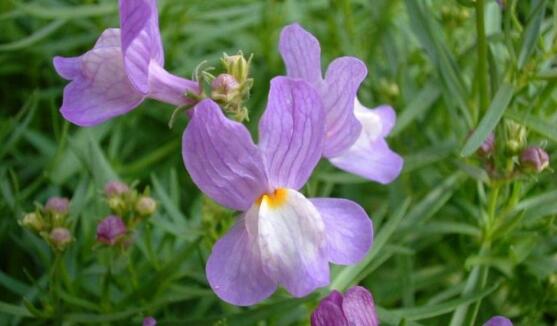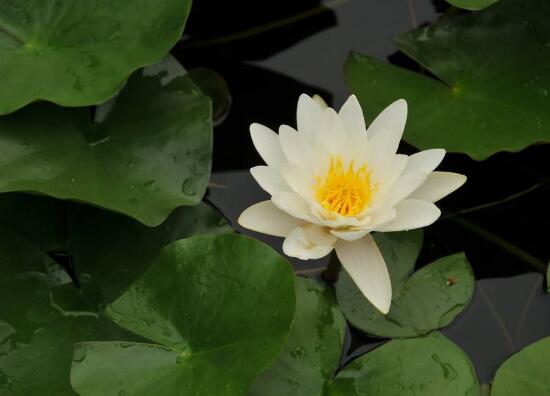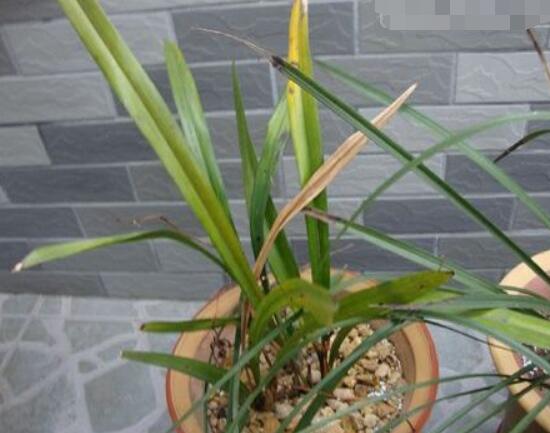What to do with the growth of worms? prevention and control of diseases and insect pests / 4 major diseases and 4 major pests
Goldfish grass, like its name, is shaped like a goldfish with bright colors, so it is a good product for indoor farming. In spite of this, the goldfish grass is still a plant, and it will inevitably be disturbed by insects, so what if the goldfish grass grows worms? In the process of cultivating goldfish grass, in addition to insect pests, disease is also one of the factors affecting the healthy growth of goldfish grass. As for the diseases and insect pests of goldfish grass, there are mainly 4 major diseases and 4 major insect pests. Let's go and have a look.
First, the goldfish grass worms how to do, looking for the cause

In the breeding methods of goldfish grass, we understand that goldfish grass has high requirements for the environment, not only soil and light, but also water and fertilization. Once there is negligence, insect pests and diseases will be found. As for the goldfish grass worms how to do, take a look at the following goldfish plant pest control, you will know.
(1) symptoms and solutions of insect pests in goldfish grass.
When it comes to the prevention and control of diseases and insect pests of goldfish grass, the first thing to consider is naturally pests. After all, if you raise plants, you will be affected by insects sooner or later. It is understood that there are four main pests of goldfish grass, thrips, whitefly, aphids and red spiders. Once found, flower friends should pay attention. The symptoms and solutions of insect pests in goldfish grass are as follows:
1. Thrips
This insect is not common, but it is one of the pests that harm the growth of goldfish grass. It is sent as adults or larvae on goldfish grass and feeds on young buds, tender leaves, flowers and young fruits. The symptoms of thrips are that the tender leaves curl after being eaten, and the shoots and flowers wither after being damaged.
Solution: when you find the above symptoms, flower friends should pay attention and look carefully. Once it is confirmed that it is this worm, you can immediately spray it with 25% ivy or 40% dimethoate 400 times.
2. Whitefly
White whitefly is a kind of white insect, which is difficult to distinguish with the naked eye. Larvae mainly adhere to the back of goldfish leaves and suck juice, causing leaves to curl and dry up, while adults harm tender leaves and absorb mesophyll juice.
Solution: when the above symptoms are found, flower friends can spray with 0.01% solution killed by the enemy, or spray 40% omethoate, once every 7 days, 3-4 times in a row.
3. Aphids
Aphids are one of the main pests that harm goldfish grass. They mainly damage the back of the leaves and suck the sap of young leaves and buds. The symptom of being attacked by this insect is that the leaves will wrinkle, turn yellow, and even fall off.
Solution: go to the market to buy an armyworm board and use it to catch and kill; in addition, flower friends can be sprayed with 150 times omethoate solution and can be cured 1-2 times. When there are a large number of aphids, it is recommended to slowly irrigate the liquid once to put an end to the disease.
4. Red spider
This insect is difficult to distinguish with the naked eye at the initial stage of the disease. it often hides on the back of branches and leaves or in dense places, sucking leaves, buds and flower and leaf fluid, affecting normal growth and development, not only affecting beauty, but also leading to the death of the whole plant.
Solution: when the worm is found, the net is hidden and it is easy to capture it manually. In addition, flower friends can use 20% trichloroacarol emulsion and add 8-1000 times water to make a solution spray, which has a good killing effect on adults, nymphs and eggs.
(2) the disease symptoms and solutions of goldfish grass.
Goldfish grass worms how to do, read the above content we should know it! However, in addition to being attacked by insects, the disease is also harmful to goldfish grass all the time, and there are mainly four kinds of diseases, namely, downy mildew, powdery mildew, gray mold and root rot. The specific symptoms and solutions are as follows:
1. Downy mildew
The disease is easy to occur in cold and humid environment, and it is one of the main diseases of goldfish grass. It mainly causes the growth of goldfish grass seedlings is blocked, yellowing and leaf curling downward. The symptom is that a layer of gray fluffy powder is produced on the back of goldfish grass leaves.
Solution: when the disease is mild, disinfect the soil, heat the greenhouse and improve the ventilation environment; when the situation is serious, basically finish, wait for the goldfish grass to die!
2. Powdery mildew
This disease is one of the main diseases of goldfish grass, which mainly harms the stems, leaves and buds of Artemisia przewalskii. Symptoms: there will be a layer of white powder on the surface of the leaves, and in severe cases, the leaves will gradually wilt and bloom less, and the flowers will be small.
Liberating method: if you find the above symptoms, flower friends should immediately spray the medicine, choose 2500 times liquid of strychnine or other appropriate agents, spray once every 10 days, spray 2-3 times continuously to cure the disease.
3. Root rot
The disease can be said to be the most common disease of goldfish grass, which often occurs in hot summer. The cause may be the root rot caused by too much watering. Mild infection may not destroy the whole plant, but weaken the growth, resulting in different branches, thin stems and short spikes.
Solution: after the disease is found, the root soil should be irrigated with 300 times Dysenamine solution in time, and timely ventilation, cooling and proper watering should be paid attention to to ensure that the basin soil is wet and not waterlogged.
4. Grey mold
The disease mainly affects the stems and flowers of Artemisia przewalskii. Symptoms: the yellowish-brown spot surrounds the entire stem, causing partial wilting of the upper plant, and in severe cases, flowers and infected parts show a large number of gray or light brown spores.
Solution: after the above symptoms are found, flower friends should remove them immediately, otherwise the disease will be contagious. In addition, 65% concentration of Dyson zinc wettable powder can be sprayed 500-800 times, once every ten days, 2-3 times.
What to do with the growth of malachite worms? pest control of malachite / 2 insect pests and 3 diseases
In the process of breeding peacock grass, the last thing we want to encounter is diseases and insect pests, this kind of problem is very harmful to the plant, which will not only affect the ornamental, but also lead to the phenomenon of death. What about the malachite worms? What should be done to control the diseases and insect pests of malachite? Next, the editor will take you to learn about it.
First, what to do when the malachite worms grow? find the reason.
If you want to know what to do with peacock grass worms, first of all, we need to understand what kind of insects grow. Only when we know the specific diseases and insect pests can we carry out targeted treatment, because the prevention and control methods of each kind of diseases and insect pests are different. The specific prevention and control details are below. Let's take a look.
II. Pest control of malachite (pest)
1. Shell worm
Shell insect is a kind of pest with high incidence during the growth of malachite grass, which mainly harms the leaves, branches and fruits of the plant. It will live on the branches and fruits of malachite grass for life, resulting in yellowing of leaves and withering of branches and shoots. In serious cases, it will also lead to the death of the whole plant.
Prevention and control methods: the high incidence of shell insects is in the early spring of each year, so we must pay special attention at this time. The most direct way to deal with this pest is to use pesticides for spraying. In terms of chemicals, we can choose 1500 times of malathion.
two。 Red spider
Among the diseases and insect pests of peacock grass, red spider is a relatively common one, and its high incidence period is in the summer every year, so at this time we must pay special attention to the fact that when this kind of pest occurs, the leaves of the plant will gradually turn yellow and white. if it is not treated for a long time, it will also lead to the phenomenon of plant wilting.
Control method: when we deal with the pest of red spider, we can directly use 40% diclofenac EC 1000-1500 times to spray, generally three times in a row can completely kill this pest.
III. Disease and pest control of malachite (disease)
1. Stem blight
This disease mainly threatens the stems and branches of peacock grass. At the initial stage of the disease, the stem will appear gray rash-like protuberance, the shape will be round or fusiform, which will affect the plant development, and even cause the stem branches to die in serious cases.
Control method: when dealing with the diseases and insect pests of this kind of peacock grass, we can use 40% chlorothalonil suspension 500 times to spray it, usually once a week or so, and then it can be cured after 2-3 times.
two。 Leaf spot disease
Leaf spot disease is a relatively high incidence of diseases and insect pests of peacock grass, and its high incidence period is from August to September every year, so we should pay special attention at this time. Leaf spot disease mainly threatens the leaves of the plant, when the disease occurs, there will be many round disease spots on the leaves, which will gradually expand with the passage of time, and finally cause the leaves to fall off gradually.
Control method: when we deal with leaf spot disease, we can use 1000 times of silazole ·prochloraz to spray the diseased plant, which is usually sprayed once every 7-10 days, and can be cured about 3-4 times.
3. Powdery mildew
Powdery mildew is a disease that may occur in many plants, and peacock grass is no exception. During the disease, many white dust-like objects appear on its leaves, and gradually spread with the passage of the event, and finally cover the whole leaf surface. Thus affecting its photosynthesis, making it appear the phenomenon of premature senescence.
Prevention and control methods: for this kind of malachite diseases and insect pests, we can use 1000 times of methyl topiramate wettable powder for prevention and control, usually once every 10 days, about 3 times can be cured.
What to do with the growth of insects in Aconitum? control of diseases and insect pests of Aconitum / 2 insect pests 2 diseases
Diseases and insect pests are the biggest headache for all plants, and aconitine is no exception. This kind of problem will not only affect its ornamental, but also lead to plant death in serious cases. So what if the aconitine grass has worms? How to control the diseases and insect pests of aconitum? Next, the editor will take you to learn about it.
First, aconitine grass worms how to do, find the reason
If we want to know what to do when aconitum grows, we must first understand what kind of insect is growing, and then deal with it pertinently, because the prevention and control methods of each kind of diseases and insect pests are different. As the saying goes, we should prescribe the right medicine to the case. In the following, there are various prevention and control methods of diseases and insect pests, friends who are troubled in this respect to have a look.
II. Pest control of aconitum (pest)
1. Aphids
Aphids are one of the most destructive pests on earth, which are harmful to many plants. Aconitum is one of them. The main damage of this pest is that adults and nymphs feed on leaves, stems, tender heads and tender panicle sap, resulting in a large loss of plant nutrients and wilting.
Control method: when we deal with the diseases and insect pests of this aconitum, we can use 40% imidacloprid water solvent 1500: 2000 times to spray it.
two。 Red spider
Red spider is a pest in many plants, and aconitum is no exception. The size of this pest is so small that it is generally difficult to find. The harmful way is to pierce the mouthparts into the leaves to suck the juice, which leads to the destruction of chlorophyll and yellowing, and in serious cases, it will cause the leaves to fall off or even lose light.
Control method: when dealing with the diseases and insect pests of this aconitum, if only individual leaves are injured, we can remove it. If more leaves are damaged, we can use 1500 times of dimethoate EC to spray the plant and kill the pest at once.
III. Pest control of aconitum (disease)
1. Black spot disease
Black spot is a disease caused by fungi, which mainly harms the leaves, petioles and shoots of Aconitum. During the disease, many purple-brown spots will appear in the affected parts, and with the passage of time, the spots will gradually expand, and the color will gradually change. Finally, the plant gradually withered.
Control methods: for this kind of aconitum plant diseases and insect pests, we can use methyl thiophanate or carbendazim to spray the diseased plants, usually once every 7-10 days, 2-3 times can be cured.
two。 White silk disease
White silk disease, also known as sclerotia root rot and sclerotia seedling blight, this disease mainly harms the rhizome or stem base of Aconitum seedlings. After the seedling is damaged, it will affect its ability to absorb nutrients and water, resulting in poor growth, serious branches and leaves will wither, when the disease spot ring stem for a week, it will lead to the whole plant withered.
Control methods: when we deal with the diseases and insect pests of this kind of aconitum, we can use Silk Dun diluted 800,800 times or Fengqian Root Protection 600,800 times to irrigate the diseased plants. Generally, the medicine is used every 10 days, and then it can be cured after 3 times.
- Prev

What about the growing insects of potted lotus flowers? control of lotus diseases and insect pests / cutting withered leaves and spraying insecticides to kill insects
Insects can grow in any plant in nature, and lotus is no exception. Lotus is one of the top ten famous flowers in China. Lotus is very popular without being stained with mud. Now many families have raised lotus flowers, but they don't know what to do with lotus bugs. Let's take a look at the prevention and control of lotus diseases and insect pests with the editor.
- Next

What about orchid worms? prevention and control of common orchid diseases and insect pests (diluted washing powder can kill insects)
Orchids are common potted flowers in daily life. Orchids are very popular because they are beautiful and unpublicized. In nature, any plant can grow worms, and orchids are no exception. The common pests of orchids are red spiders, scale insects and whitefly. Many people don't know what to do with orchid worms.
Related
- Fuxing push coffee new agricultural production and marketing class: lack of small-scale processing plants
- Jujube rice field leisure farm deep ploughing Yilan for five years to create a space for organic food and play
- Nongyu Farm-A trial of organic papaya for brave women with advanced technology
- Four points for attention in the prevention and control of diseases and insect pests of edible fungi
- How to add nutrient solution to Edible Fungi
- Is there any good way to control edible fungus mites?
- Open Inoculation Technology of Edible Fungi
- Is there any clever way to use fertilizer for edible fungus in winter?
- What agents are used to kill the pathogens of edible fungi in the mushroom shed?
- Rapid drying of Edible Fungi

